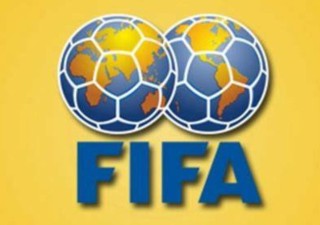In Taiwan, the number of overall new patent applications filed in Q2 2015 dropped 2.37%. Of these, invention patents were slightly up by 0.88%, whereas utility model and design patents both saw decreases. In trademarks, the number of applications exceeded that in Q2 2014.
.jpg) “The decrease in patent applications exhibits the damaged economy, while the increase in trademark applications shows rigorous market competition and establishment of small businesses,” says CF Tsai, a partner at Deep & Far in Taipei.
“The decrease in patent applications exhibits the damaged economy, while the increase in trademark applications shows rigorous market competition and establishment of small businesses,” says CF Tsai, a partner at Deep & Far in Taipei.
The number of invention applications totaled 10,554. Of these, foreign applications were up by 8.3%, whereas domestic applications decreased by 9.2%.
“The increased invention patent applications from foreign sources are mainly from foreign giants, which means the creation power and profitmaking abilities of foreign giants are increasing, while the decreased number of domestic applications stands for the damaged creation power and profitmaking abilities of local industries,” says Yu-Li Tsai, patent department head at Deep & Far.
When broken down by nationality, Japan continued to top the chart, followed by the United States, South Korea, Germany and mainland China. Of these, South Korea fell by 20.99% whereas Japan, the US and mainland China saw growth rates of 2% to 11%.
“Falling filings from South Korea indicate that the country suffers a slightly similar situation with that of Taiwan,” adds Yu-Li Tsai.
Among the top 10 inventionfiling domestic corporations, Hon Hai continued to take the lead, outnumbering Acer. In terms of technical fields, Hon Hai focused on the Internet of Things (IoT) and robot territories and Acer targeted hardware demands of the IoT. Hong Fu Jin Precision Industry (Wuhan), a Foxconn subsidiaries featuring computer accessories, squeezed in the 10th spot.
“The Taiwan Intellectual Property Office (TIPO) emphasizes that we may look further into the quality instead of merely the quantity of the applications,” says Crystal Chen, a partner at Tsai, Lee & Chen in Taipei. “Taking Foxconn as an example, statistics indicate that its filing number peaked at 2010 and then constantly decreased in following years. However, its R&D investment does not shrink correspondingly, nor does its revenue. Furthermore, patent filings are not the only indicator. Granted patent maintenance and registration of tech-licensing are two other exemplary available sources to assess a given technology.”
In the semiconductor industry, Intel has led the top 10 invention filing foreign corporations for three consecutive quarters, followed by Applied Materials, Semiconductor Energy Laboratory and Tokyo Electron. Domestically, Taiwan Semiconductor Manufacturing Company landed in the sixth spot.
Among major portable-device manufacturers, Apple and Samsung Electronics took a downward turn, whereas HTC experienced growth in the first half of 2015. In Q2, Apple leaped to sixth place, while Samsung Electronics and HTC came in in 24th and 9th places, respectively. In terms of technical fields, Apple targeted its operating system, while Samsung Electronics and HTC sought advanced improvements in portable-device hardware.
The number of invention applications by major display corporations dropped in Q2 2015. Of these, AU Optronics and Samsung Display focused on display components and manufacture, Nitto Denko highlighted layering technology, and LG Chem targeted organic LED components and devices. On the other hand, Fujifilm, which targets innovation in imaging technologies, grew by 2.94%.
“Local companies still focus on developing more high-definition screens. The decreasing numbers from major display corporations point out their poor profit forecasts and pessimistic market surveys,” says CF Tsai.
In expediting invention patent examinations, TIPO in Q2 2015 was able to decrease its backlog by 24.31% and shorten the average pendency for first office action (to 18.82 months) and disposal (to 26.97 months). By the end of 2015, disposal pendency is expected to average at 24-25 months.
“Speed is important, but comparable speed for all applications may be more important,” CF Tsai says. “What is even more important is the examination quality. If TIPO keeps all the available resources it has now, the speed will eventually be further improved because new filings are decreasing.”
Chen says that TIPO launched the patent backlog clearance project several years ago. “By aid of a supplementary budget, TIPO has hired more than 39 assistant examination officers, 170 additional contracted examiners, and has recruited many more substitute civilian servicemen to fill up the insufficient manpower. The difference of the standard deviations of pendency between various technologies of the application is diminishing. Yet, biological applications will normally be examined right upon a request for substantive examination, whereas electronic and mechanical application may still need to wait a bit in the pipeline when requested and that accounts for an approximately 20-30 months pendency,” she says. “Based on the development on clearing the backlog, we believe it is positive to stimulate innovation in the industry.”
In trademarks, the number of applications increased by 2.98%. Of these, domestic applications grew by 1.83% and foreign applications grew by 6.63%. When broken down by nationality, mainland China continued to take the lead, followed by the US, Japan, South Korea and Hong Kong. All of these countries except Japan (-9.34%) saw growth rates of 10% to 63%.
“There are many legitimate marks intended to explore the Taiwan market,” Yu-Li Tsai says. “It is also true that the trademark trolls desire to dominate the Taiwan market. Mainland China and Hong Kong applicants have different reasons to register trademarks in Taiwan. Mainland Chinese simply desire to occupy a share in the Taiwan market while Hong Kong applicants seek trademark registrations in Taiwan because they find Taiwan is a lovely place to live. As to the huge drop from Japanese applicants, it seems that the commercial connection between Taiwan and Japan has been somehow saturated,” adds Yu-Li Tsai.
Chen says that although Japan shows a decrease in applications for the past two quarters, when viewed at a longer time span, the total number of Japanese applications is slightly more than those from the US (18,743 v. 18,449). “It is suggested that the annual statistics, rather than quarterly, will give a better idea in terms of the filing trend, because by experience, the number may possibly come up in the next quarter and therefore make up the shortage,” she says. “Applications from mainland China, the US, South Korea, and Hong Kong increased year-onyear. Accordingly to TIPO, malicious squatting of marks is not obvious among its applications so far. Whether a mark is determined either legitimate or in bad faith, however, should be better decided in a later opposition and invalidation proceeding. Most of them are applying for registration in Taiwan for its potential market demands.”
Lastly, the trademark division of TIPO does not have an immediate plan to expand the size to cope with the increasing number of applications, says Chen. “It is predicted that trademark applications will receive an annual growth rate of 3% by the end of 2015,” she says.




.jpg) “The decrease in patent applications exhibits the damaged economy, while the increase in trademark applications shows rigorous market competition and establishment of small businesses,” says CF Tsai, a partner at Deep & Far in Taipei.
“The decrease in patent applications exhibits the damaged economy, while the increase in trademark applications shows rigorous market competition and establishment of small businesses,” says CF Tsai, a partner at Deep & Far in Taipei. 


